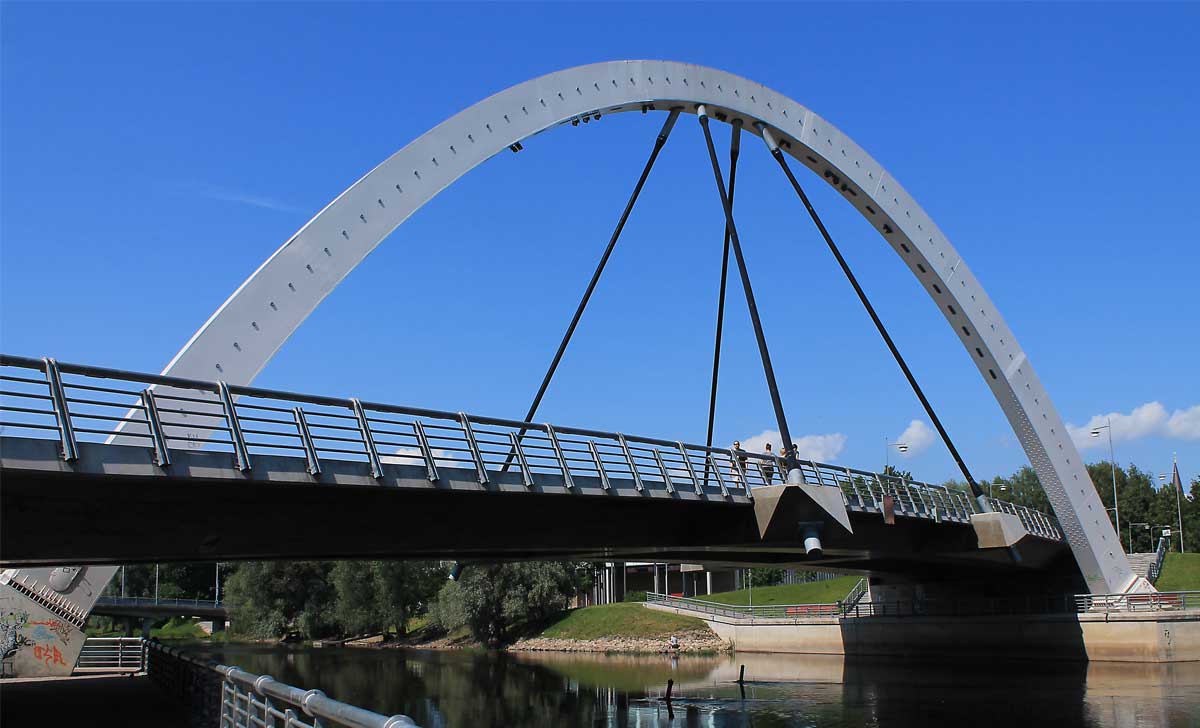
Freedom Bridge
The Freedom Bridge, connecting Lai and Vene streets, is the newest in Tartu, emerging in its current form in 2009. However, its story began much earlier.
The History of Freedom Bridge
The need for a crossing over the Emajõgi River was first felt by people living in Tartu during the Middle Ages. Primarily, the bridge was needed to facilitate a trade route to Russia. At that time, the city’s borders were significantly different, with the river running near the city, not within it.
The first written mention of a bridge at this location dates back to 1554 when it was called the Russian Bridge. In 1704, Tsar Peter the Great of Russia ordered a road to be laid to Tartu’s Russian gates, arranging a temporary crossing over the river. In 1772, there were plans to build a stone bridge across the Emajõgi River, but these were disrupted by a fire in 1775 that nearly destroyed Tartu’s historical center.
A wooden bridge was built at the site of the current Freedom Bridge in 1810. Unfortunately, it quickly deteriorated, necessitating the construction of a new crossing. Another wooden bridge, designed by city architect Georg Geist, was built in 1826. It was destroyed by a fire in 1923, caused by a nearby enterprise.
Another bridge was constructed in 1926, this time using reinforced concrete. In 1940, it was named Victory Bridge, but it was destroyed by Soviet troops in 1941. German engineers began to rebuild the bridge according to the original design in 1942, completing it by 1943. However, in August 1944, retreating German forces blew up the structure.
For over half a century, there was no crossing to connect Lai and Vene streets. The bridge was rebuilt in 1993 as a black-painted metal structure for pedestrians only. The iron bridge was dismantled in 2007, and the new Freedom Bridge was opened in 2009.
Photo Gallery
Bridge Characteristics
The Freedom Bridge in Tartu is 90 meters long and 18.75 meters wide. At night, the arch of the structure is illuminated with colored lights. The bridge was designed by the St. Petersburg company “Transmost” and is intended for both vehicles and pedestrians.
Location on the Map
Other Places of Interest
- The most famous bridge over the Emajõgi in Tartu is the Arch Bridge, also known as the Student Bridge, associated with many amusing stories.
- An interesting photo can be taken next to the sculpture of Oscar Wilde and Eduard Vilde, where the bronze writers are depicted conversing near a printing house.
- Be sure to visit the Museums of Tartu, as their exhibitions are bound to be of interest.
